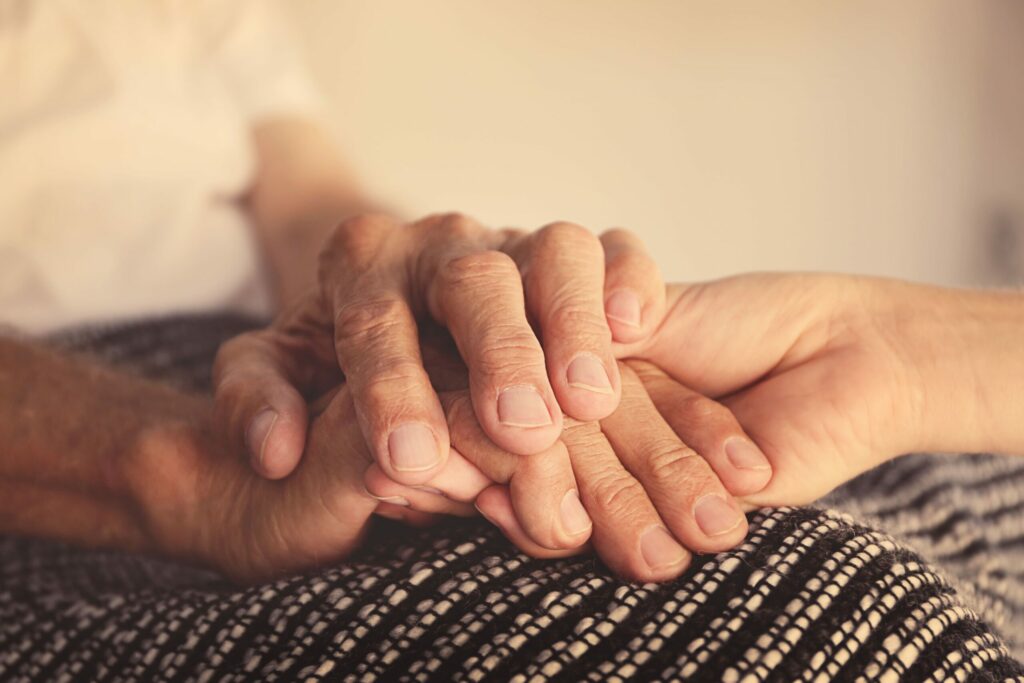Understanding Palliative Care Compared to Hospice Care
Some older adults and people with serious illnesses, unfortunately, experience the end of life in certain healthcare settings that do not align with their desired wishes. If you have a serious illness or are a caregiver of someone planning end-of-life care, knowing the difference between palliative care and hospice care can help you make an informed decision when the time comes to transition to one of these healthcare settings.
What Is Palliative Care?
Palliative care is a form of care that focuses on improving your quality of life and that of your family when you are living with a serious illness. It focuses on your whole-person health rather than only on your condition. If you are receiving palliative care, your treatment plan may focus on reducing symptoms of your illness and on improving secondary conditions such as depression, sleep deprivation, and side effects of medications.
Palliative care may be given in various healthcare settings, such as at the hospital, a residential care facility, or your home. Anyone can receive this type of care regardless of age or the severity of their condition.
If you receive palliative care, you may work with and be treated by various healthcare professionals, including doctors, nurses, social workers, pharmacists, physical therapists, counselors, and nutritionists. If you need spiritual care, your palliative care team may even include a chaplain. The healthcare professionals that make up your palliative care team will depend mainly on your recovery needs and level of care.
Studies show that palliative care offers many benefits, including:
- Reduction in pain, nausea, and shortness of breath
- Improved communication among patients, their loved ones, and their healthcare providers
- Increased emotional support
- High-quality care that aligns with the patient’s wishes
- Reduction in stress
- Increased confidence surrounding decision-making related to care
- Ability to meet the emotional and spiritual needs of the patients and their loved ones

What Is Hospice Care?
Hospice care focuses on improving your comfort and quality of life when you are nearing the end of your life. This type of care is usually given in circumstances in which an illness continues to progress despite treatment or when the patient chooses not to receive certain treatments. Hospice care is similar to palliative care in that it provides comfort care and support for the family. However, treatments are not given to improve the illness.
Like palliative care, hospice care can be given in many different healthcare settings, though it is most frequently given at your home, where you can be most comfortable and spend quality time with your loved ones. In addition, it is typically given when your healthcare provider believes you have no more than six months to live. Some benefits of hospice care include 24/7 access to nurses and healthcare workers who can address and relieve symptoms and side effects and access to medical equipment and medications that can reduce your discomfort.
Many of the same types of healthcare professionals that make up a palliative care team will also be part of your hospice care team. This includes doctors, nurses, social workers, chaplains, and volunteers who dedicate their time to giving you the support you need and making you feel as comfortable as possible during your final months.
To be eligible for hospice care, you will discontinue aggressive treatment efforts to combat your terminal illness (such as experimental surgeries, aggressive chemotherapy, or other treatments that require prolonged hospitalization and recovery). However, you may continue to receive treatments for other conditions, such as antidepressants to treat depression or insulin medicines to control Diabetes.
What Is Comfort Care and End-of-Life Care?
Comfort care and end-of-life care are both terms that describe the type of care you receive when you are near the end of your life and are no longer receiving treatment for your illness. It is highly similar to palliative care in providing you with whole-person care that focuses on your physical, social, emotional, and spiritual health. Comfort care and end-of-life care may include palliative care or hospice care, or a combination of both.
What Are the Main Differences Between Palliative Care and Hospice Care?
Sometimes, palliative care is given as part of hospice care, and both types share many similarities. For instance, the goal of both palliative and hospice care is to improve your quality of life and help you find relief from painful and severe symptoms and side effects of treatment. Both types of care also focus on whole-person health. However, there remain many differences between palliative care and hospice care.
Some of these differences are:
- Palliative care can be given to anyone with a serious illness, regardless of the stage of their disease. In comparison, hospice care is typically only given when a person has less than six months to live and is at the end of their life.
- Palliative care can be given simultaneously when the patient receives other treatments for their condition, such as chemotherapy or radiation therapy. Hospice care is usually given when treatment for the illness has stopped, and the goal of care is to manage the patient’s symptoms for the remainder of life.
- The healthcare professionals on a palliative care team work separately from the patient’s primary care team that is treating the illness. In comparison, the healthcare professionals on a hospice care team handle the majority of the care and collaborate with the patient’s primary care team as necessary.

Who Should Consider Palliative Care?
You may want to consider palliative care if you or your loved one has a serious illness or chronic condition that requires long, intensive care or that causes severe physical symptoms and/or emotional distress. For example, cancer, heart disease, AIDS, and kidney failure are some of the many conditions that can benefit from palliative care.
Additionally, palliative care may benefit you if you:
- Want relief from severe physical pain you are experiencing due to your illness
- Are experiencing emotional pain or psychological conditions that you are unable to control
- Want to continue to receive treatment for your condition
- Want tips and guidance on how to effectively manage your condition
- Need guidance with choosing the best treatment
- Need help understanding your illness
- Want to receive treatment at home or outside of a traditional hospital setting
- Have loved ones who are involved with your treatment
- Need help transitioning from one treatment setting to another
When Would Someone Transition From Palliative Care To Hospice Care?
A person may transition from palliative care to hospice care if their doctor thinks they have no longer than six months to live. Sometimes, it can be difficult for doctors to predict exactly how long it will take for a particular disease to run its course or how long a person has left to live if their health is in decline. In these circumstances, it’s important to consider how transitioning to hospice care could improve your quality of life during your final months.
According to the National Library of Medicine (NLM), doctors should strongly consider referring chronically ill patients to hospice care if they spend more than half their time in bed, are unable to function efficiently, and are experiencing both physical and psychological distress. The NLM adds that hospice referrals are usually necessary when the patient’s condition has progressively declined to the point that their highest priority is to take control of their healthcare and achieve the greatest possible comfort in their homes as they near the end of life.
Talk to your doctor if you think you may need hospice care but aren’t sure when you should transition out of palliative care. Your doctor can talk to you at length about your options and the benefits of transitioning to hospice care based on your condition and unique circumstances.
Taking advantage of hospice care as soon as it’s needed could result in access to quality care and lots of extra quality time to spend with your loved ones. Additionally, studies show that patients who plan their care in advance are more likely to be satisfied with their care, given how they can make decisions that align with their end-of-life wishes.
How to Get Palliative Care or Hospice Care
Consult with your healthcare provider if you or your loved one is interested in learning more about palliative care or hospice care. Your doctor can refer you to a palliative or hospice care specialist who can answer all your questions and help you determine which of these services may be more ideal.
Palliative care and hospice care are covered by many major health insurance providers, including Medicare. The exact benefits covered will vary based on your health plan. Benefits covered may include medical equipment and supplies, skilled nursing care, bereavement support, and medications to provide comfort, among many others.
Hospice At Your Side has resources for home health and hospice services throughout the United States. Specialty services we offer include diabetes care, orthopedics, and pain management. Call us today to learn more about our many home healthcare services.
References
- https://www.nia.nih.gov/health/what-are-palliative-care-and-hospice-care
- https://www.ninr.nih.gov/newsandinformation/what-is-palliative-care
- https://www.cancer.gov/about-cancer/advanced-cancer/care-choices/palliative-care-fact-sheet#what-is-palliative-care
- https://www.cancer.org/treatment/end-of-life-care/hospice-care/what-is-hospice-care.html
- https://www.cancer.gov/publications/dictionaries/cancer-terms/def/comfort-care
- https://www.nia.nih.gov/health/frequently-asked-questions-about-hospice-care
- https://www.ncbi.nlm.nih.gov/books/NBK554501/


